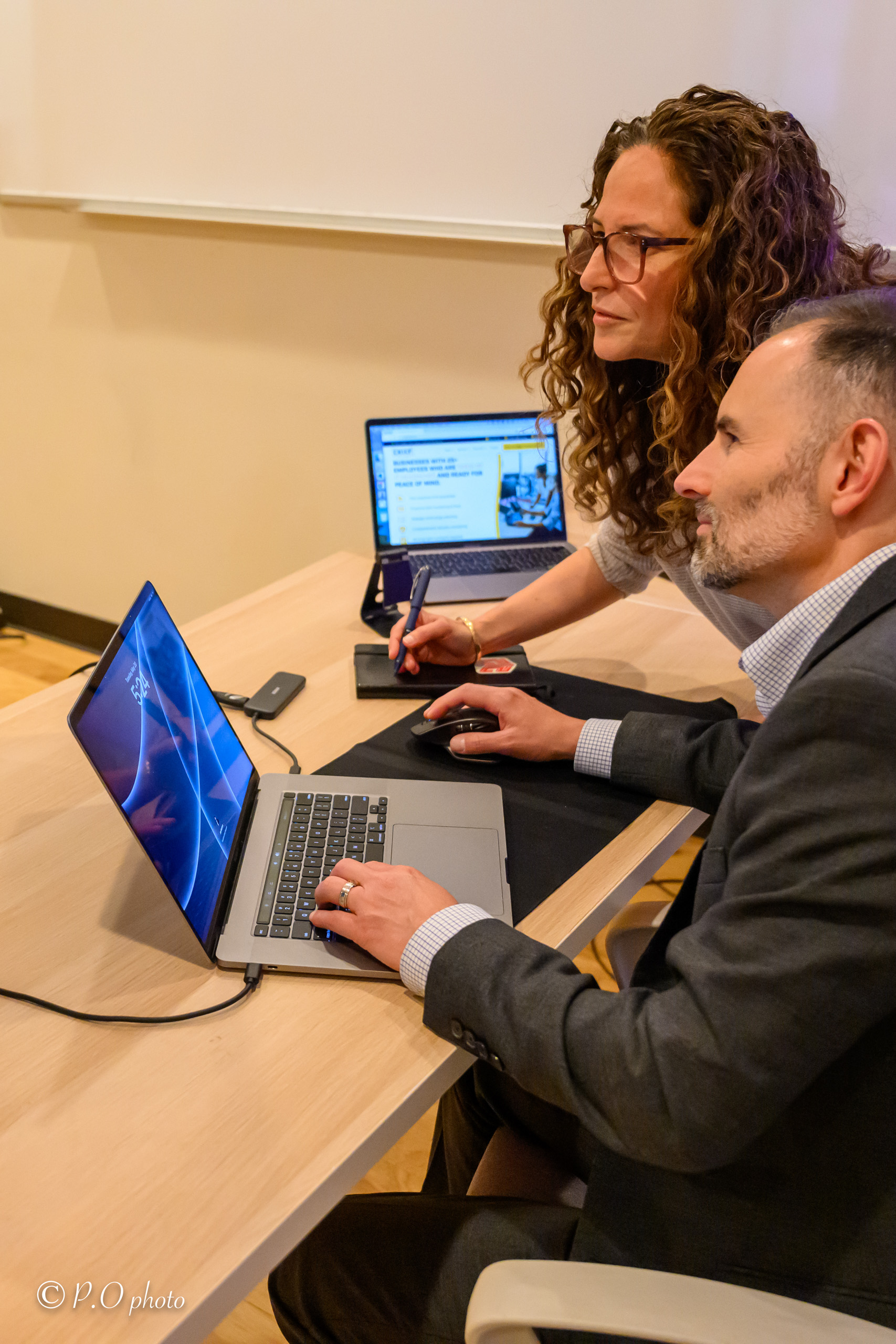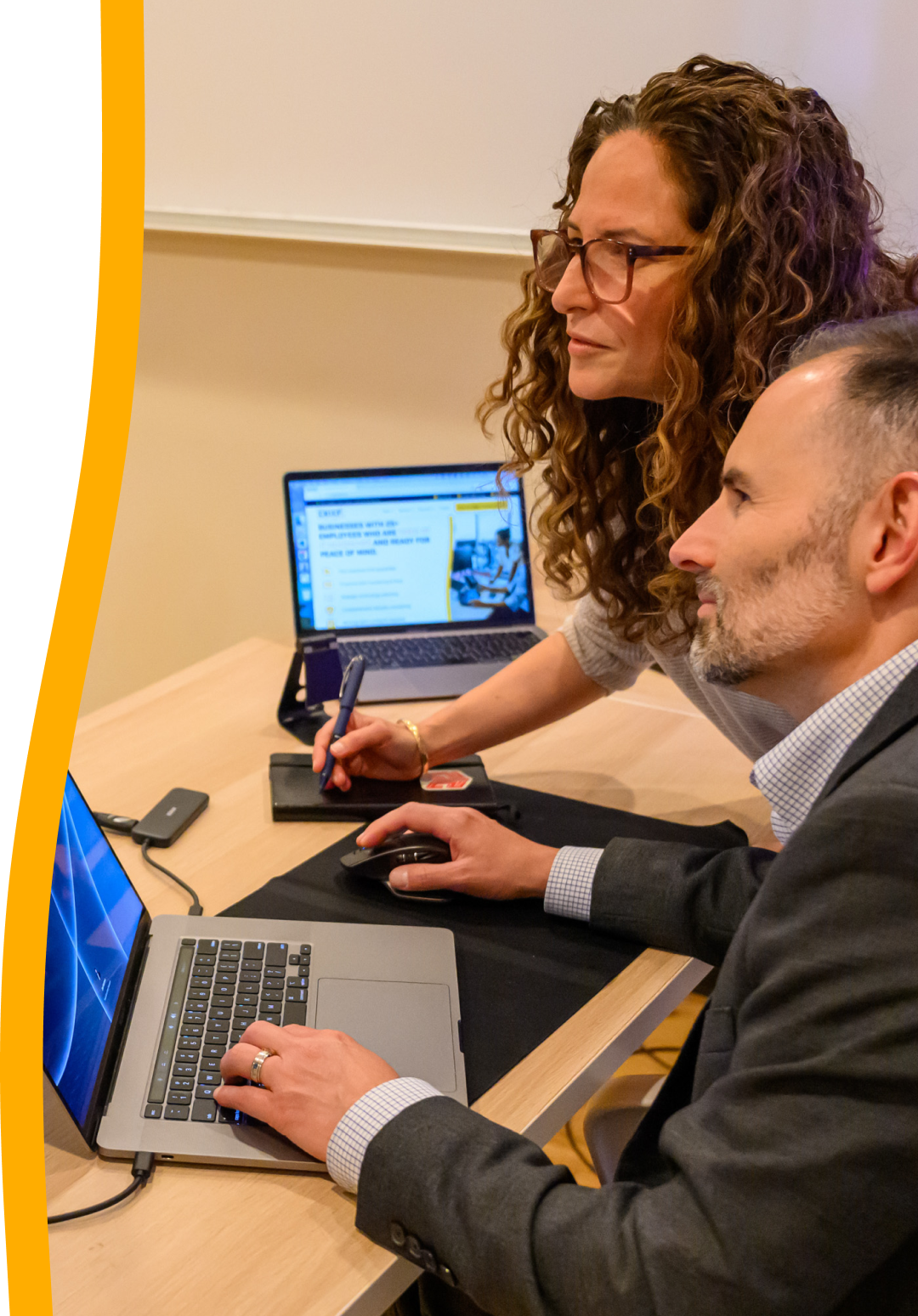
Tech Issues Stealing Your Focus? We'll Fix IT So You Can Build Your Business.
We're the NYC tech team that not only shows up when you need us but also proactively ensures your systems run smoothly, addressing potential issues before they impact your operations.

Perfect for growing NYC businesses with 25+ employees who are tired of IT headaches and ready for peace of mind.
Fast response time guarantee
Proactive tech monitoring & fixes
Strategic technology planning
Comprehensive security monitoring
No long-term contracts required

Are These Tech Headaches Holding You Back?
"I Can't Get Anything Done..."
Your team is constantly hitting tech roadblocks. Simple tasks turn into hours of frustration. Support tickets disappear into the void, and your current IT provider seems to operate on their own timeline – not yours.
"We're Always Playing Defense..."
Every week brings a new crisis. Your network is sluggish, systems crash without warning, and you're never quite sure if you're meeting compliance requirements. You're tired of throwing money at problems instead of preventing them.
"Nobody's Taking Charge..."
Your current IT support just puts out fires – there's no strategy, no planning, no foresight. You need a partner who understands where your business is heading and can guide your technology investments accordingly.
"My Team Is Fed Up..."
You're hearing the same complaints over and over: "The system is down again." "IT never called back." "Why is everything so slow?" Your employees are frustrated, productivity is suffering, and you know it's costing you money.
Here's What Great IT Support Actually Looks Like
Imagine walking into work knowing your technology just works. No surprises, no emergencies, no wasted time. That's life with Chief Second.
"Finally, We're Moving Forward"
Your network runs smoothly. Updates happen automatically. Security is tight. And when issues do pop up? They're often fixed before you even notice. That's the power of proactive IT.
"Everyone Knows the Plan"
Regular strategy sessions keep your technology aligned with your growth. You'll know exactly what's happening, what's next, and what it means for your bottom line. No more guessing games.
"My Team Can Focus Again"
Tech problems aren't derailing your day anymore. Support requests get immediate attention. Your employees are productive, confident, and actually happy with IT. (Yes, it's possible!)
"We Have a True Partner"
We're not just another vendor – we're part of your team. We learn your business inside and out, anticipate your needs, and help you use technology to gain a competitive edge. Plus, with no long-term contracts, we earn your trust every month.

Featured Client Success Story
"Initially skeptical about outsourced IT, our perception has completely changed thanks to Chief Second. Their professionalism and personalized approach have made them more than just consultants – they are trusted partners."
What Made the Difference
"Gary and his team's calm and clear approach made the entire process not only manageable but genuinely enjoyable."
"They took the time to understand our unique needs and challenges, ensuring their recommendations were truly impactful."
"Their responsiveness and accessibility have been outstanding. Always available to address our queries."
"Working with Chief Second has equipped us with the confidence and knowledge needed to enhance our IT operations significantly."
.avif)
How We Keep Your Business Running Smoothly
We handle all your IT needs with one comprehensive solution. No hidden fees. No confusing terms. Just reliable, proactive support that helps your business thrive.
Technology Alignment
Regular network reviews and proactive maintenance keep your systems running at peak performance. We spot and fix issues before they impact your business.
Virtual Chief Information Officer (vCIO)
Your dedicated technology strategist meets with you quarterly to align IT with your business goals, plan for growth, and ensure your tech investments deliver real value.
24/7 Help Desk Support
When you need help, we're there. Quick response times, clear communication, and effective solutions get your team back to work fast.
Professional Services
From cloud migrations to new system implementations, our expert team handles all your IT projects with minimal disruption to your business.
Centralized Services
Behind the scenes, we manage all your critical systems - from backups to updates - ensuring everything runs reliably and securely.
All Included
- Proactive maintenance
- Regular security updates
- Cloud services management
- Network monitoring
- Backup management
- Strategic planning
Free Guide: How to Choose the Right IT Partner
Don't Get Stuck with the Wrong IT Provider
Download our free guide to learn the critical questions most businesses forget to ask (and why they matter).
Inside You'll Discover
- How to evaluate an MSP's proactive maintenance process
- What to ask about disaster recovery and business continuity
- Key questions about after-hours support and project handling
- How to avoid hidden costs and surprise fees
- Ways to ensure your provider truly understands your business
Get Your FREE MSP Evaluation Guide
Instant download, no strings attached
Getting Started Is Easy
1. Schedule a Free Consultation
Fill out our quick form and we'll meet in person to understand your business needs and current IT challenges.
2. Get Your Custom IT Plan
We'll analyze your technology infrastructure and create a tailored solution that aligns with your business goals.
3. Experience Stress-Free IT
Watch your technology transform from a daily headache into a powerful tool that drives your business forward.
No complex contracts. No hidden fees. Just clear communication and reliable IT support that helps your business thrive.
%20(1).avif)
Gary Whittaker, Founder & CEO
at Chief Second
We Believe There's a Better Way
We understand how frustrating it is when technology slows down your business instead of accelerating it. Your team should be focused on growth, not wrestling with IT problems.
That's why we've built a different kind of IT company—one that combines enterprise-level expertise with the personal attention your business deserves. We handle the technology so you can handle the growth.
Common Questions
We guarantee a 1-hour response time for all support requests. Your team shouldn't have to wait around for IT help when there's work to be done.
No. We work on a month-to-month basis because we believe in earning your trust, not locking you into contracts. Our clients stay with us because they want to, not because they have to.
We'll help make the transition smooth. We can review your current agreement and create a plan that minimizes disruption to your business when you're ready to switch.
Very little. The whole point of partnering with us is to take IT off your plate. We handle everything proactively, so you can focus on running your business.
We specialize in supporting NYC businesses with 25+ employees who need comprehensive IT support. Our solutions scale with your growth.
Have Another Question? Let's Talk
Ready for IT That Works as Hard as You Do?
Transform your technology from a daily headache into a business advantage. Book your free consultation today and see why growing NYC businesses trust Chief Second.
No pressure, no obligations. Just a friendly chat about your business needs and how we can help.



.svg)

.svg)

